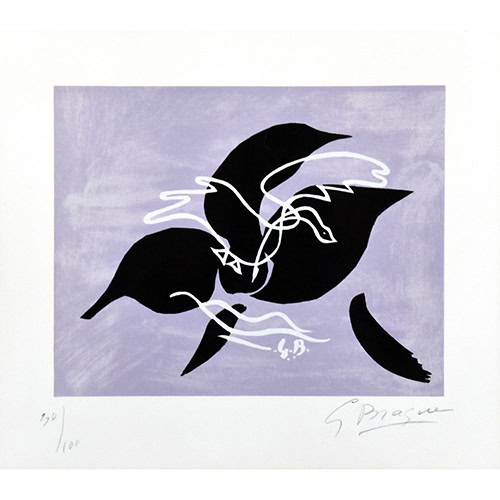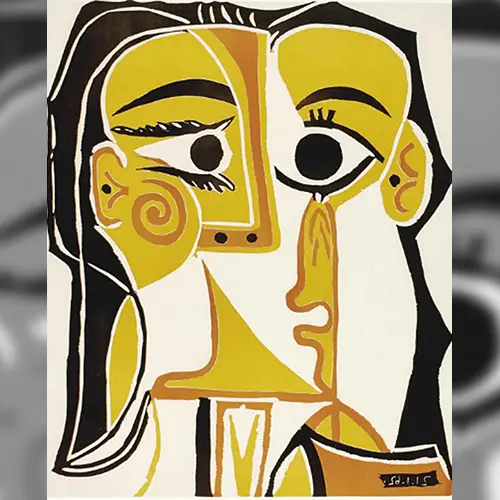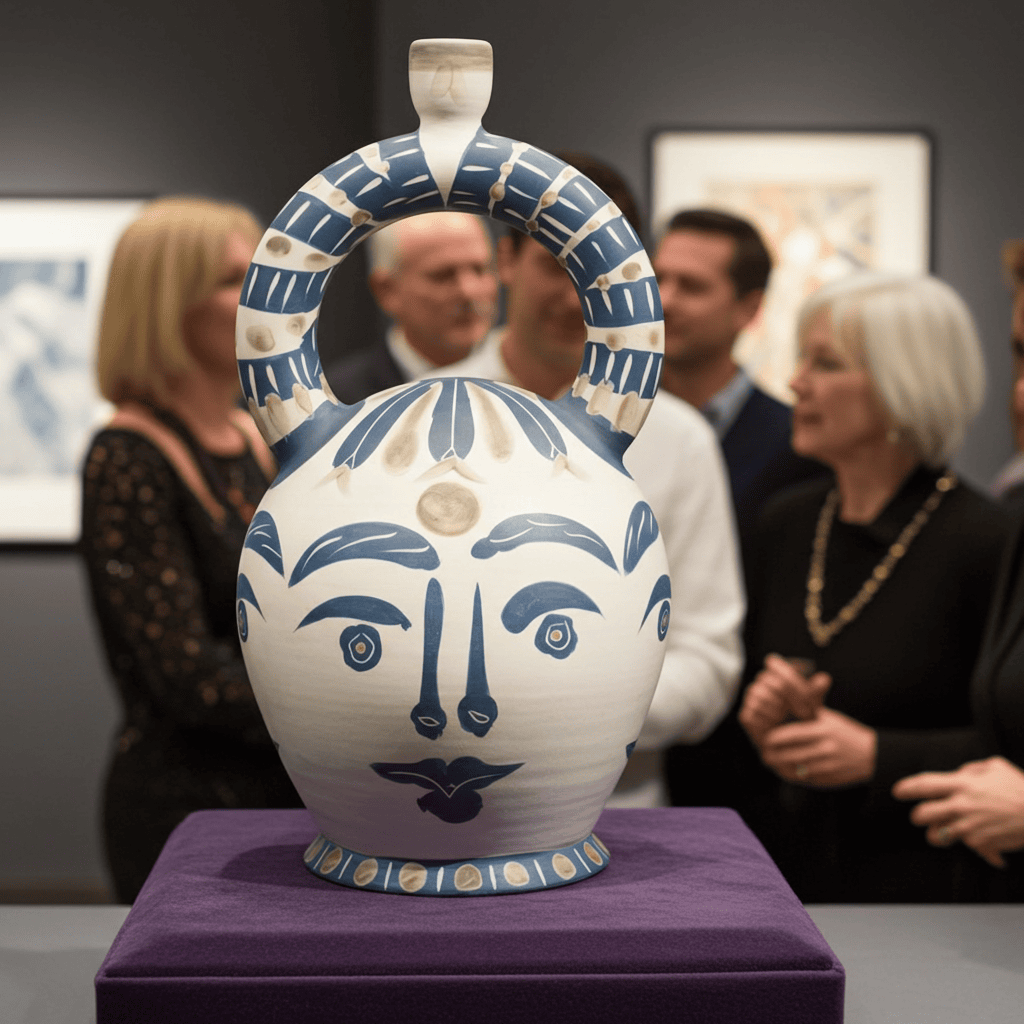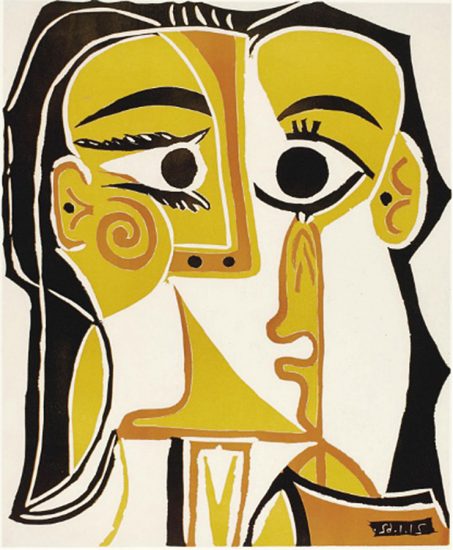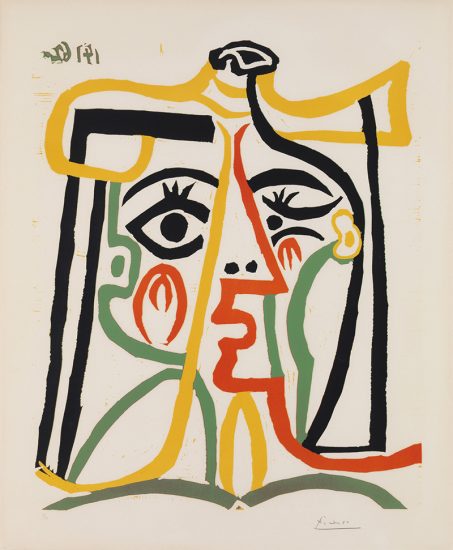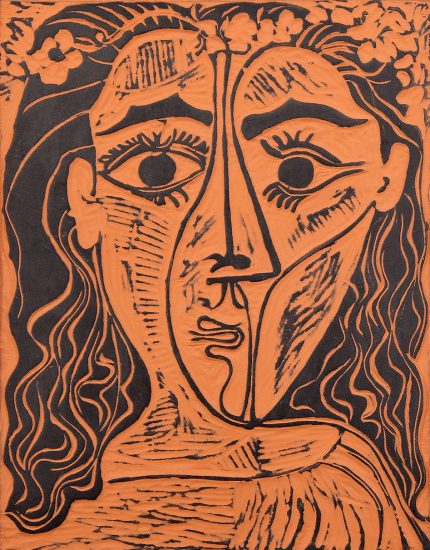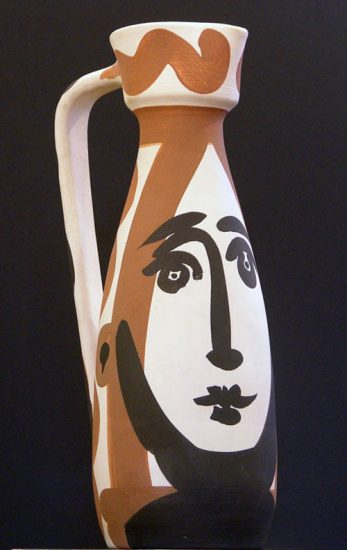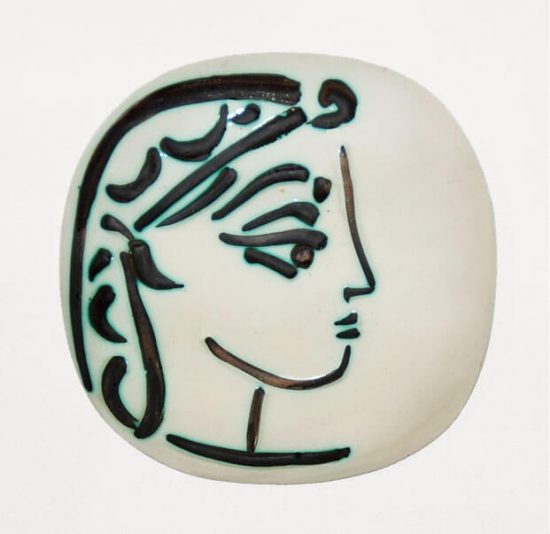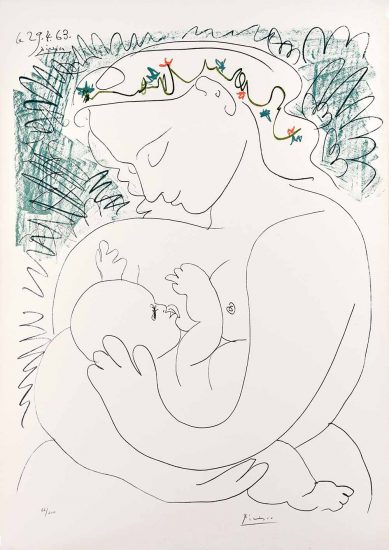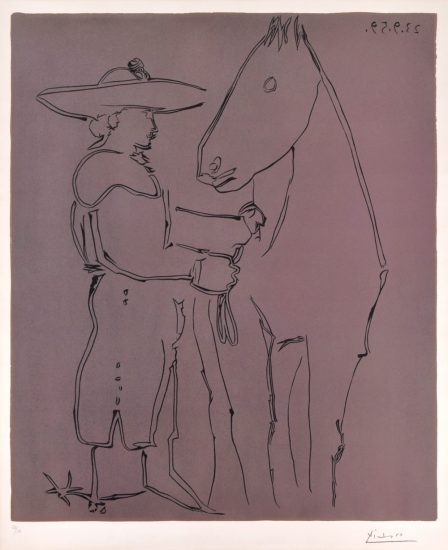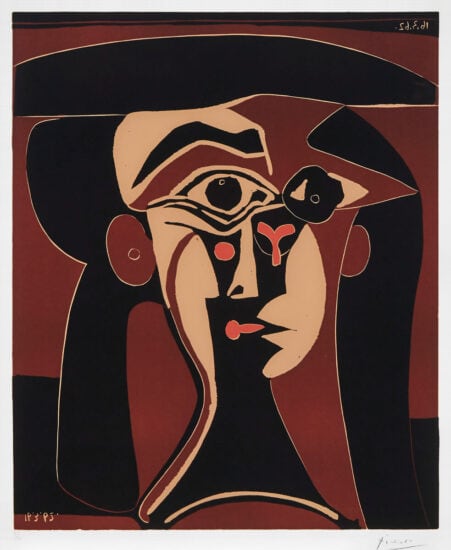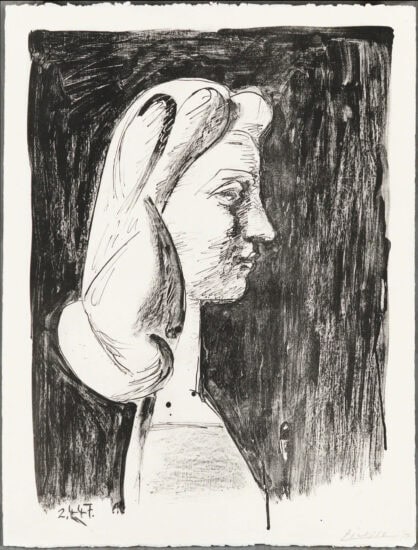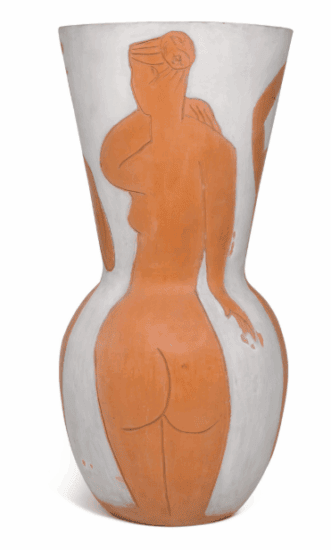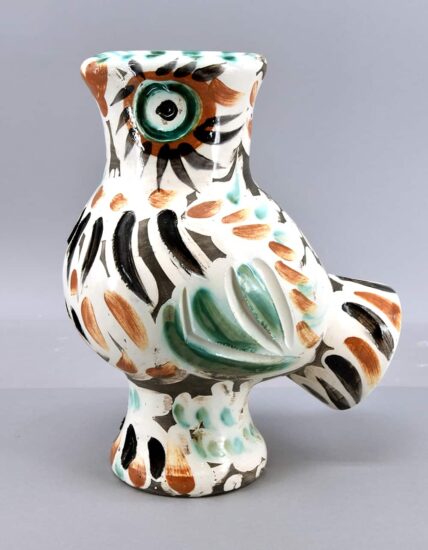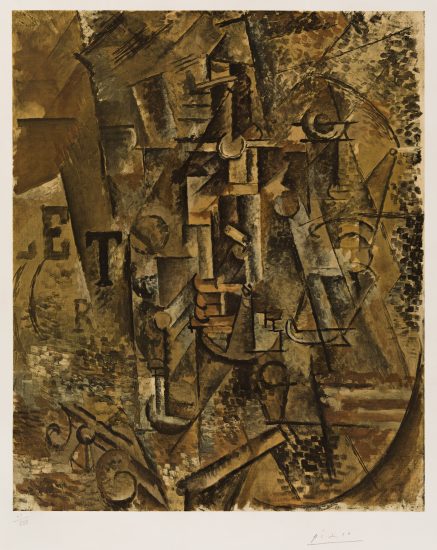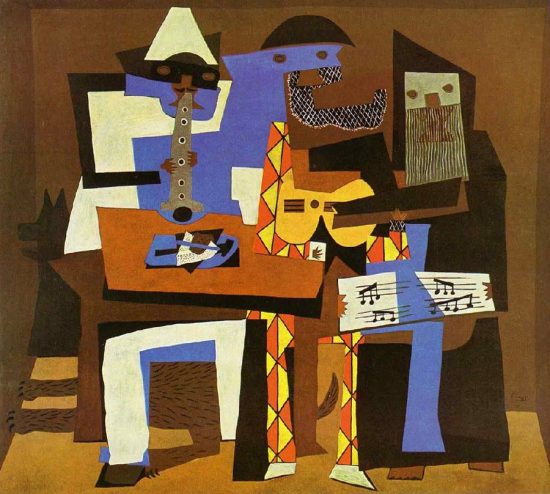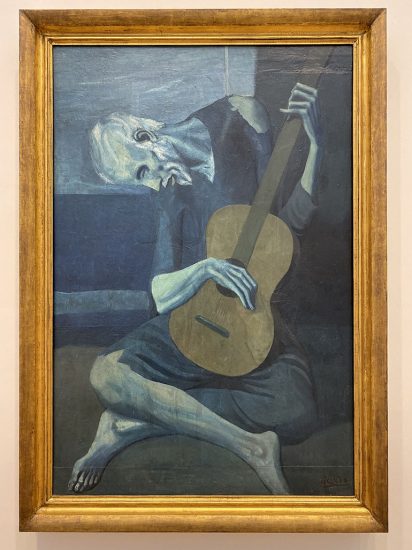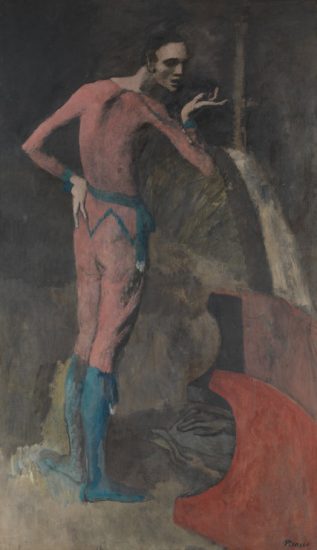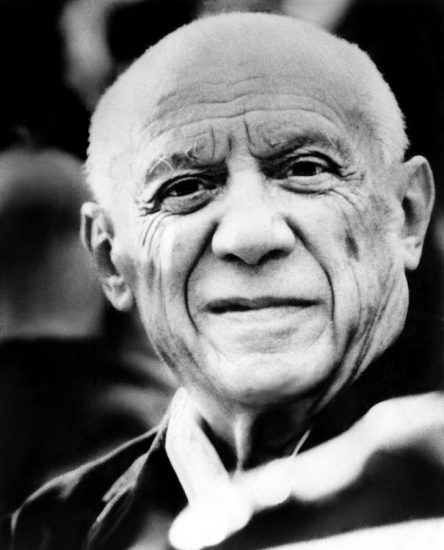Pablo Picasso*, born in 1881 in Malaga, Spain, and died in 1973 in Mougins, France, was an active artist for most of his long life. His father was an artist himself, was Picasso’s first and most formative art teacher. Picasso has one of the most prolific creative careers in history, and his work was not only loved by art lovers around the world, but it was also incredibly influential for artists everywhere. But what was Picasso’s inspiration? What inspired these famous works?

Picasso went through many creative phases in his career. These phases have been labeled as “periods” and show the different styles and mediums he was experimenting with during that time in his life. Picasso's “Blue Period” started in 1901 and lasted until 1904. During this period, Picasso painted mostly in cool blue and green tones, sometimes using a warmer color to accent his works. These pieces have a melancholy about them, and are quite somber, featuring scenes of poverty and desolation. What was Picasso’s inspiration to start painting in this way? In the spring of 1901, one of Picasso’s dear friends, a painter and poet named Carlos Casagemas, committed suicide in a cafe in Paris. Picasso was deeply affected by his death, and sank into a depression that lasted several years. Picasso’s journey through his grief and depression is clearly reflected in his “Blue Period.”
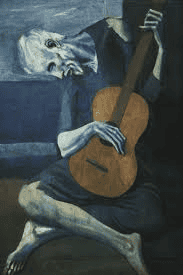
In 1904, Picasso moved to Montmartre in Paris, and settled into the community of bohemian artists and creators there. Coming out of his depression over his friend’s death, Picasso moved on from dark and serious subjects in his paintings to more lighthearted compositions featuring harlequins, clowns and carnival performers. His color palette warmed up as well, with his paintings now bathed in reds, oranges, pinks and earth tones. This period would be known as Picasso's “Rose Period” and it lasted until 1906. So what can be credited with this major shift in his work? Picasso met a woman named Fernande Olivier in 1904 and they began a relationship that lasted seven years. Olivier would be the first of a long line of women who were muses and lovers to Picasso over the years. This relationship and the end of his bout of depression signaled a more positive phase of Picasso’s life. The overall tone of his work during this period is much more carefree and less somber.
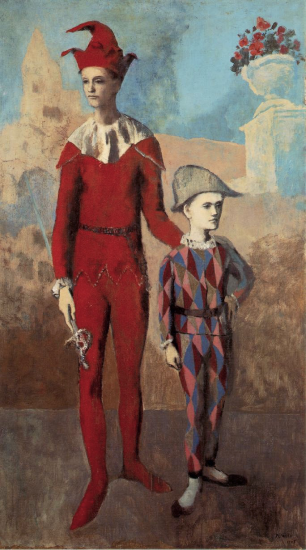
Citing beautiful women as inspiration would become a theme in Picasso’s life, all the way up until his death. Picasso has been quoted saying: “For me there are only two kinds of women, goddesses and doormats.” He often became obsessed with a young woman and she became an artistic muse for him, inspiring many works. All of the women Picasso took as either wives or lovers were painted by the artist. His second wife Jacqueline Roque was the subject of over 400 portraits by Picasso, and was a great source of inspiration to him.
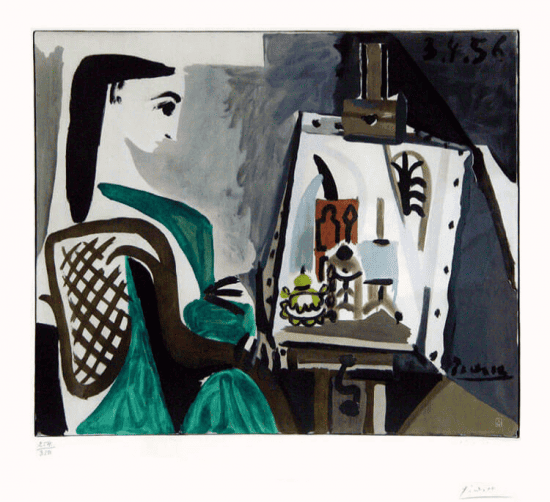
From 1906-1909 Picasso was heavily inspired by African art, after he was exposed to traditional African masks and other art objects coming from Africa into French museums in Paris. This phase has been called his “African Period,” and was a precursor to his most famous period, “Cubism.” Influenced by Paul Cezanne’s experimentation with three-dimensional spacing and perspective, Picasso and Georges Braque pioneered the artistic movement known as Cubism. This way of breaking down a form to its most basic forms and reconstructing them in an abstracted way is what Picasso is most known for.
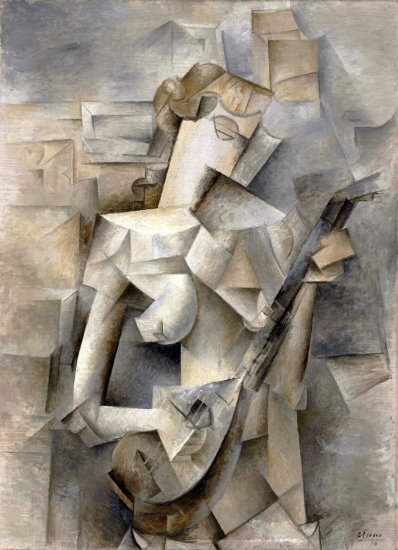
So what can we say was Picasso's inspiration?
Throughout his life, Picasso's inspiration came in many different forms. Whether it be working through his emotions, responding to a difficult life event, meeting a beautiful young woman, an intense love affair or the work of his fellow artists, Picasso took inspiration from everywhere in his life. In turn, his life’s work has inspired and influenced millions of people around the world and forever changed the history of art. There is no denying the power of Picasso’s creative mind, and the effects of his stylistic experimentation in Cubism shaped the artistic movements that followed him. As an artist who would come to influence so many artists himself, Picasso is a pillar in the modern art world with a fascinating life full of inspiration.
From https://news.masterworksfineart.com/2019/11/28/what-was-picassos-inspiration .
* As an Amazon Associate I earn from qualifying purchases.

